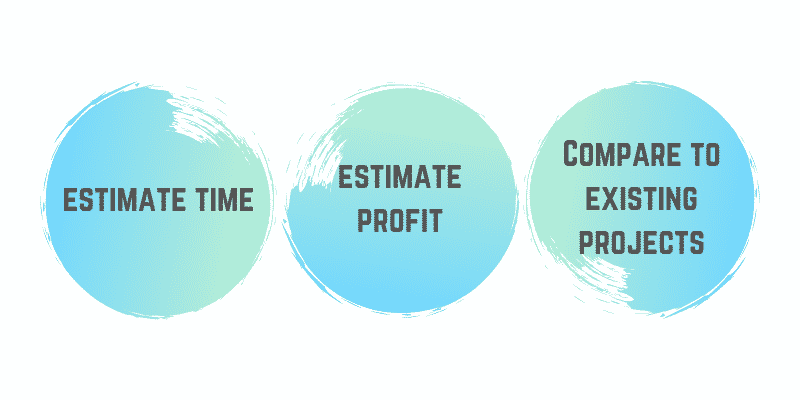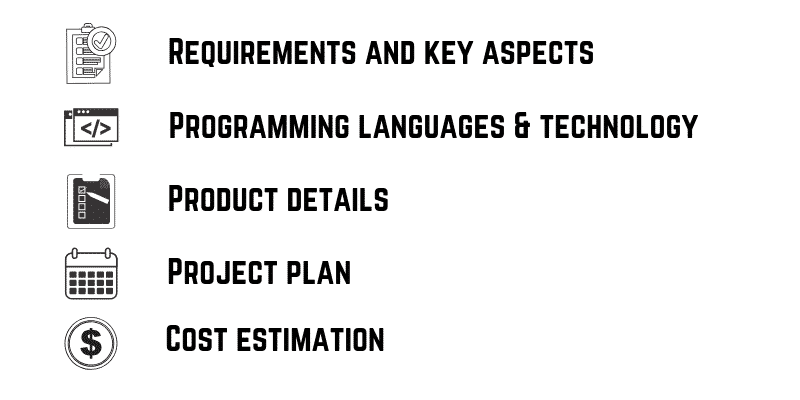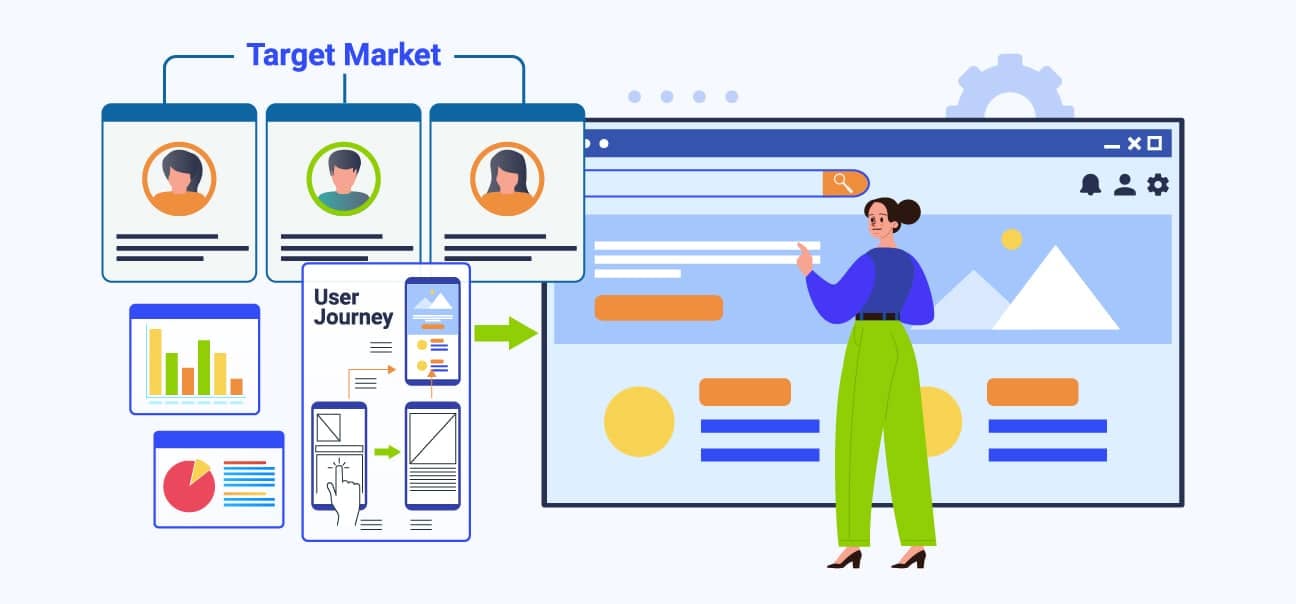How to Budget for an Agile Software Development Project

In this article, we’ll outline a more traditional approach to budgeting for Agile Software Development.
What Is an Agile Software Development Budget Estimate?
When you’re planning the budget for your next project, first you need to get the project specifications and requirements. Then, you need to calculate the cost and time. You also need to come up with a plan to deal with all the iterations, so your budget has to be flexible.
There are two main types of iterations you will most likely do:
- Work on building new features
- Changing elements once you receive feedback from your stakeholder
Your job is to keep the agile predictive, to keep the budget flexible, and not go (way) over budget. It’s not easy, but it’s doable, and we’ll show you how.
Two Factors That Determine Budgeting In Agile Activity
When considering your budget, there are two crucial things to keep in mind:
- The project scope, or the number of features you request, should be minimal in most cases. Many features that are initially thought of as “necessary” are not actually critical parts of the application. Therefore, it’s essential to think through your features carefully and choose only the important ones.
- Software development is never complete. There will always be new features, new functionalities, bugs, improvements, and security updates. If you don’t set up the budget at the beginning and define the project goals, then the software plan may become a constant drain of company funds.
How To Estimate The Budget For Agile Projects?
Let’s look at the main approaches to software development budget estimation:
- Cost-of-time (a.k.a. “top-down”) estimation: Initially, you may ask your internal development team or software advisor how long it will take to develop a specific target functionality. You may then multiply this time by the average cost of engineers. This calculation will give you a rough idea of how much you need for the development process. Don’t forget to count all the non-development activities!
- Impact and potential profit estimation: At first, you may estimate how much profit the application will generate so you can get an idea of how much you should spend on it. In such a case, Agile application development would work best because it allows you to iterate your application until it matches your budget estimate.
- Comparison estimation: An application’s budget can be roughly estimated if the number of features and the complexity of the application are comparable to some existing application. However, this method may only work if you have significant experience and more than one application to compare. Otherwise, this could very well end up being as good as a guess.

Software Application Discovery As The Best Method For Estimating The Application Software Development Budget
Discovery is a process where a project team discovers all technical requirements related to a given project, so they can prototype the application and estimate the budget. So, not only can you discover all the technical requirements, but you can also see how an app would look like and figure out how much the entire process is going to cost.
Thanks to the prototype, clients love this Agile approach because they get to see how an app looks and feels like. A prototype is a semi-functional graphical representation of a potential product that offers an overall look and user flow for examination before any real development begins. Prototypes often look so natural and complete that they can be handed off to a potential user for the feedback!

By the end of the discovery cycle, the following items are delivered to the client:
- Requirements definition and analysis: These elements offer a review of key aspects, critical functionality, and core technical features. The project team, to achieve this, dives into the initial requirements, making them more coherent and tying the various proposed elements to each other.
- Recommended technological stack: An outline of the programming languages and technologies that will best suit the requirements. Often, a comparative table is used to present the pros and cons of each recommended approach.
- Functional and nonfunctional requirements: This captures the details of the potential product, including vision, scope, and a description of user functionality.
- Project plan: A step-by-step plan for how the project should run to achieve on-time and on-budget delivery.
- Cost estimation: Detailed cost estimates that provide granular analysis. Usually, at this point, estimates are so precise that budget overruns rarely happen.
From a business perspective, discovery helps uncover new opportunities and/or verify a business idea. The results of this process might influence or even shift the direction of any further product development. This method provides invaluable insights at a very early stage.
By investing time in discovery, you can minimize the project risks associated with cost and schedule overruns.
What Goes into Agile Software Budgets?
Before you set up a meeting with your software development team, make sure that everyone understands that only part of the budget goes to development. Software budgets include analysis, prototyping, testing, support, hardware costs, and communication, plus a host of other overheads and parameters.
Here’s what you need to consider when dealing with software project budgets:
- Communication overhead: Communication is something no one thinks about when budgeting. Communicating takes up a significant amount of working time and includes planning, meetings, and unplanned communication (for example, when seeking clarification on a feature). For some roles, such as project managers, communication can take up as much as 80 percent of work time.
- Application quality management: Certain actions are necessary for assuring quality and maintainability, like various testing procedures, fixing application deficiencies, supporting code and architecture, and so on.
- Marketing: Marketing complements software or application development by helping bring your application to market and making it visible to potential clients. Marketing may include behavior tracking, search engine optimization (SEO), advertising campaigns, and an array of other services.
- Support: The very nature of applications means they cannot exist without support. Just think about how often your computer operating system or smartphone needs updating. It’s possible (and likely) that your desired application—while simpler than Windows/ OSX or Android/iOS—will require some budget for continuing support.
- Hardware: There is almost no application today that does not require some kind of backend hardware to provide services to users. As such, hardware costs—such as hosting or dedicated infrastructure—should be part of your budget estimate.
What To Do If The Budget Estimates Are Too High?

So, you went over the budget. Here’s what you can do to reduce expenses.
- Reduce complexity: In many cases, costs rise when software architecture and integration grow in complexity. One typical example is integrating an application with several different payment gateways, and then trying to process all of them within the app itself. In a case like this, explore the possibility of utilizing third-party solutions instead.
- Reduce scope: To achieve this, you might try using sophisticated techniques like story maps. Alternatively, you can eliminate some of the application’s less-necessary functionalities; if you have a detailed estimate (such as the one you got by going through the discovery phase), this is easy.
- Focus on a minimum viable product: In some cases, a minimum viable product (a.k.a. an MVP) is enough to get you to a beta launch while radically eliminating waste.
How To Avoid Poor Agile Budget Allocation?
To avoid the risks associated with poor budget allocation, follow these steps:
- Allocate your budget with a buffer: Because the cost of software development may vary, the best Agile budget management approach is to allocate at least 20 to 30 percent more. You won’t necessarily spend this money, but you can use this buffer to finish the application in the case of an unplanned turn of events. There’s nothing worse than halting development at 95 percent completion.
- Allocate more if you’re redoing an existing application: It may sound counterintuitive, but if you already have an app and want to recreate or update it, it may cost you more than creating an application from scratch. Why is this? Well, first, reverse-engineering is always more complex. Remember NASA? Despite having well-documented the construction of the Apollo spaceships, they can’t build them now because it would be more complex than creating a new one. Also, you may need to support two applications concurrently. Lastly, data migration may be required, which is another non-trivial task. As a rule of thumb, a budget for revamping an existing application should be about 150 percent that of building a new application.
- Cost estimation differs from team to team: Agile teams vary in terms of expertise, velocity, quality of team members, and involvement. Let’s say you get an estimate from one team saying this software project requires X hours. You cannot easily transfer that same estimate to another team where the rate-per-hour (for instance) is lower and expect to get the same results for less money.
- Project management triangle: With a project management triangle that features time, quality, and budget, you can only expect to get two of those items at once. For example, your Agile project may be of high quality and delivered fast, but it will cost a fortune. So, if you have time, quality, or budget constraints, you should consider this in your Agile budgeting process.
Here’s A Real-life Example Of How We Plan Agile Software Development Budget
At BIT Studios, we do several things to help keep your budget low and prevent overruns.
- We focus on the MVP.
- We keep scope changes under control. In the previous Agile plan, we found that some stakeholders consider agile development an opportunity for endless change. They are later shocked to discover that endless change destroys the timeline and budget. We know how to help our clients avoid this.
- We create software architecture in advance and inform clients about its limitations. For instance, we’re upfront about the impossibility of architecting software that allows endless changes without having a significant impact on the original architecture.
Even the biggest and most sophisticated software giants like IBM only have 40 percent of their projects meet all three criteria of the project management triangle—time, quality, and budget. Further, a study published by the Harvard Business Review found that the average budget overrun is about 27 percent, while about 15 percent of all software projects exceed their projected budget by a staggering 200 percent.
Unrealistic or inaccurate estimates have the potential to threaten your project’s success by lowering quality, violating deadlines, or leaving the Agile project incomplete as a result of budget overruns. Following practical and tested agile application development budget-setting mechanisms, such as those mentioned in this article, can help you push through to successful project completion.
We’re BIT Studios!
At BIT Studios we specialize in designing, building, shipping, and scaling beautiful, usable products with blazing-fast efficiency



